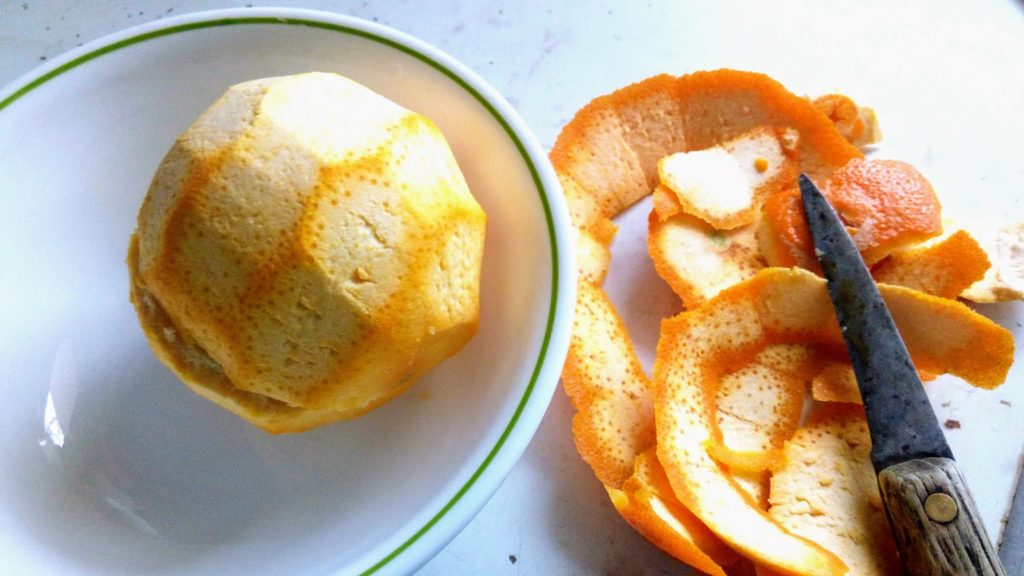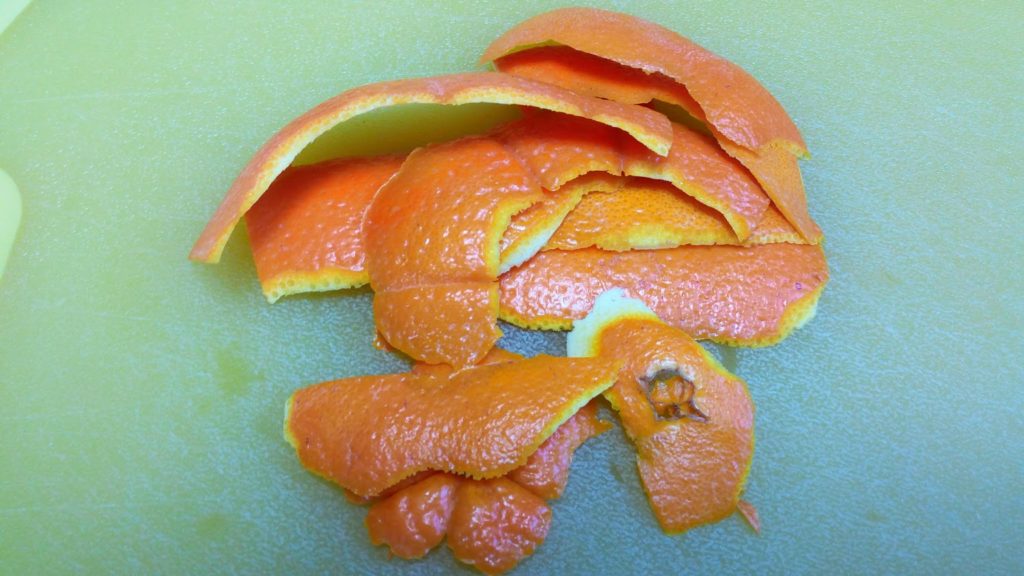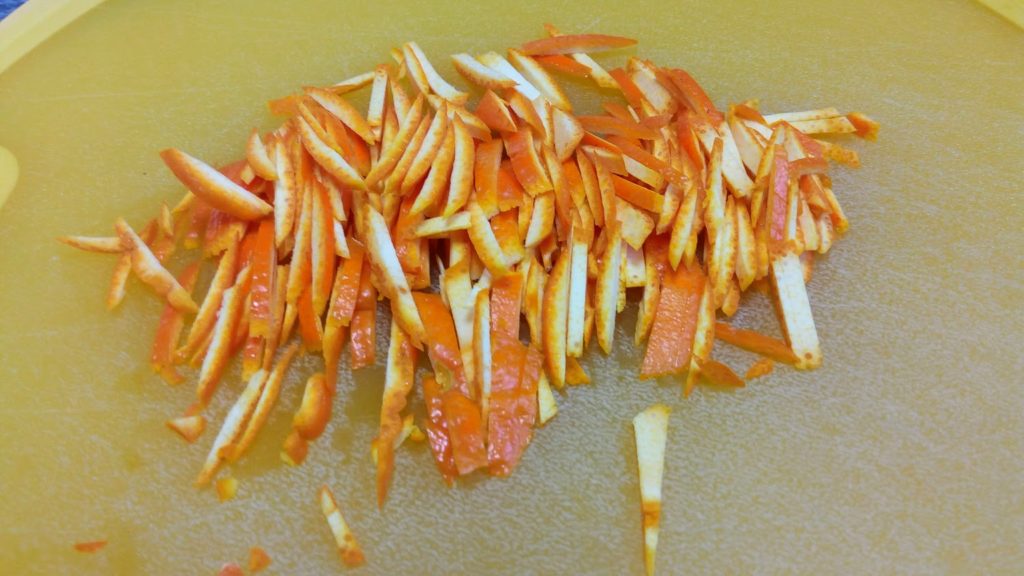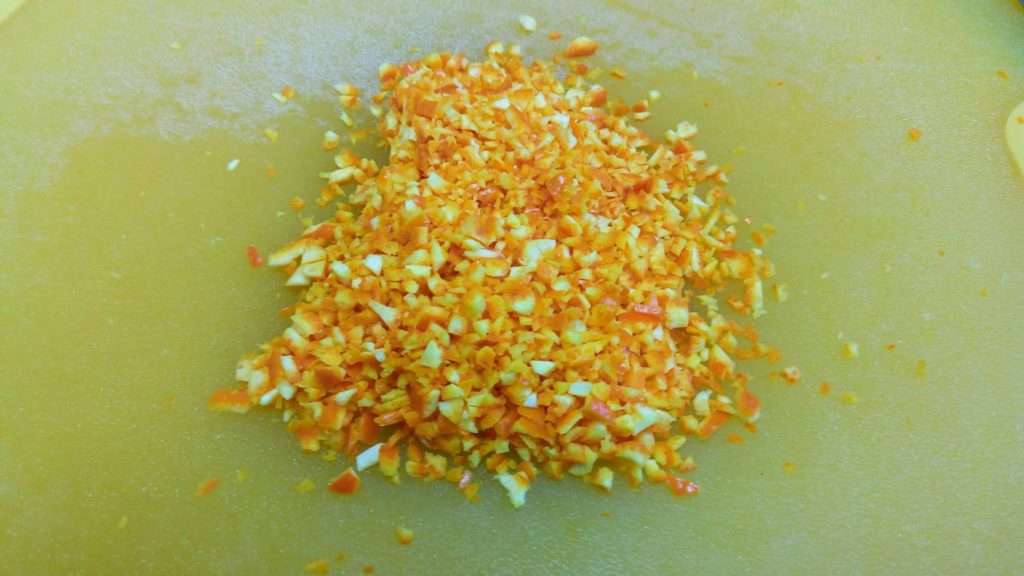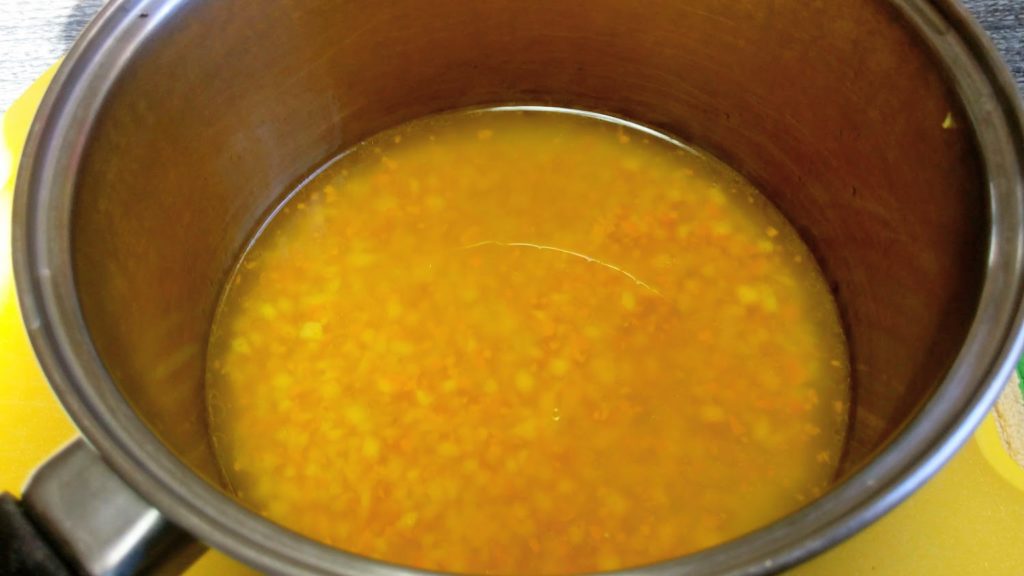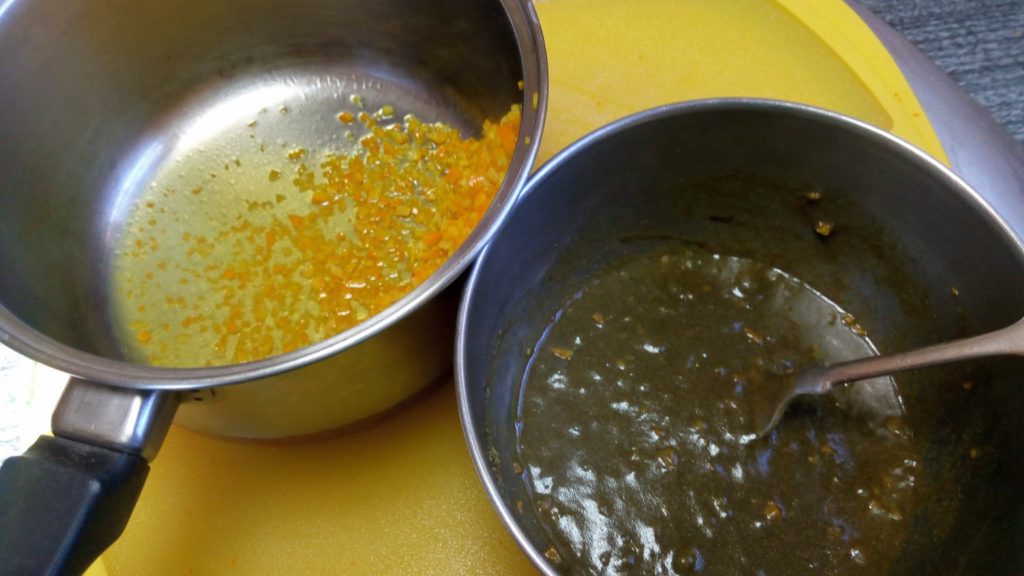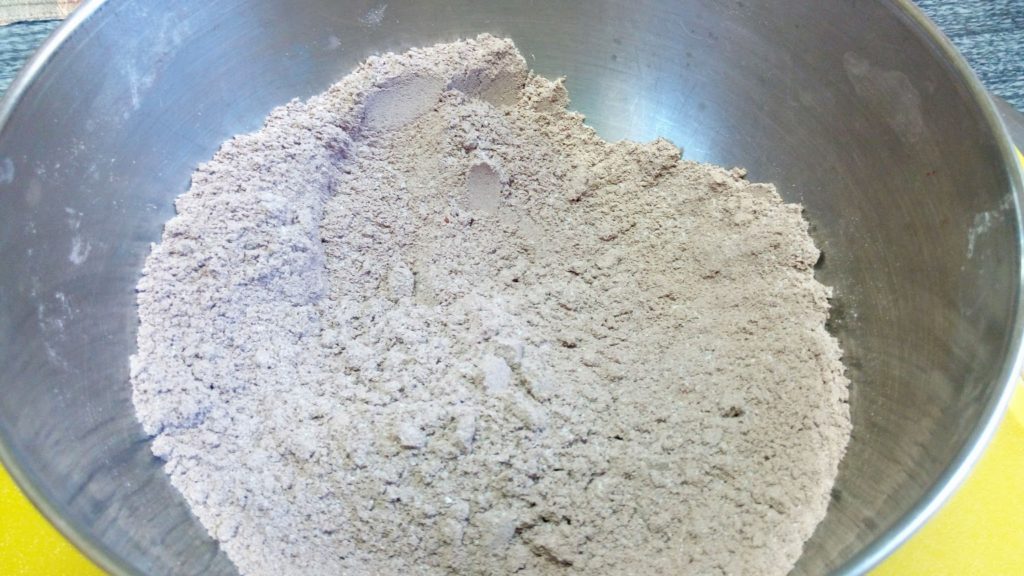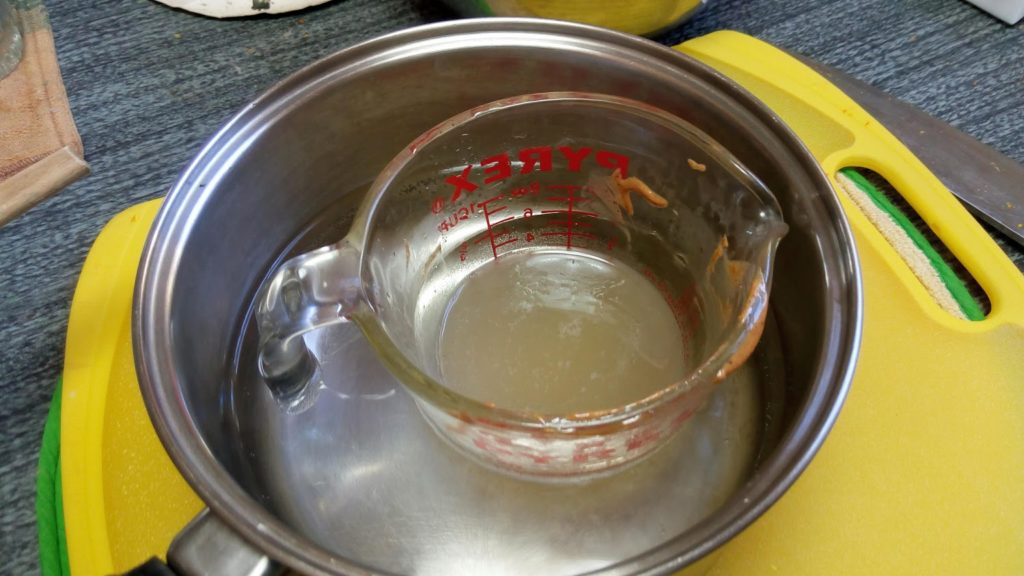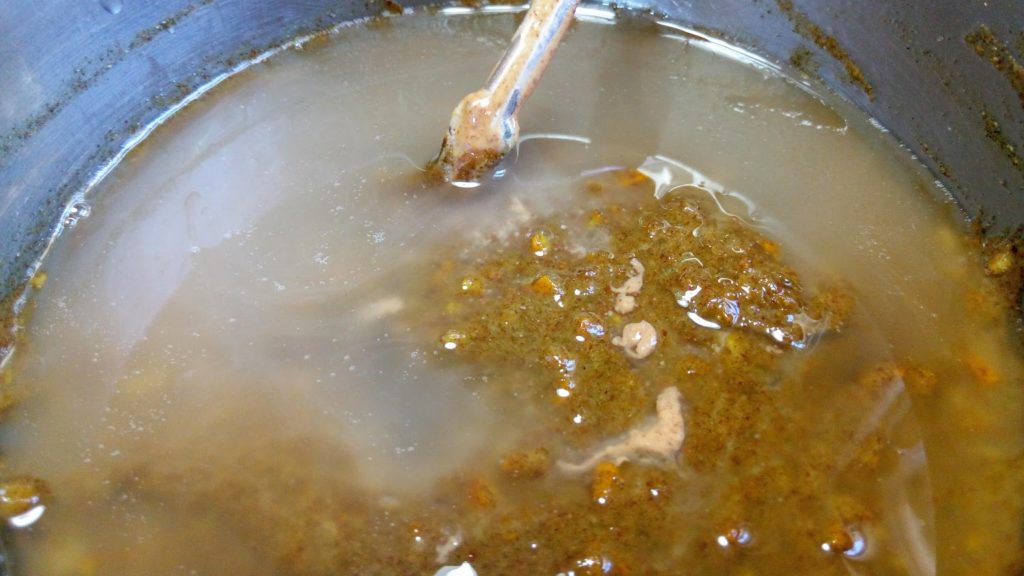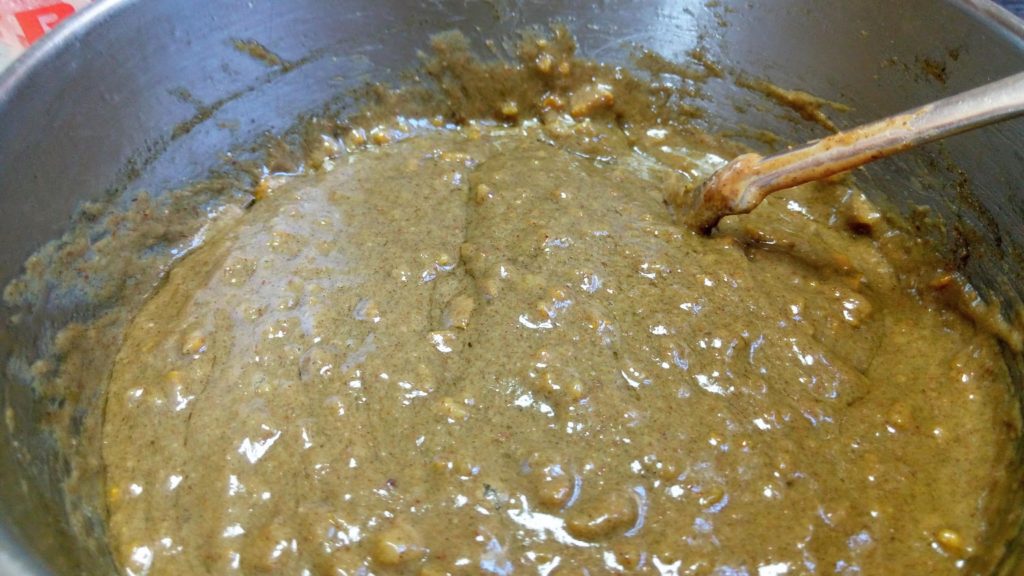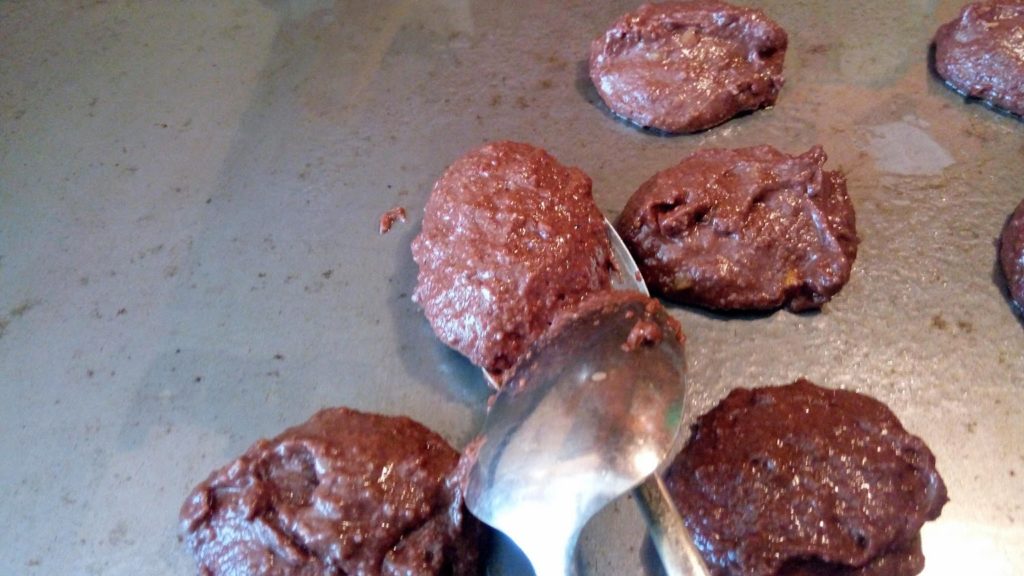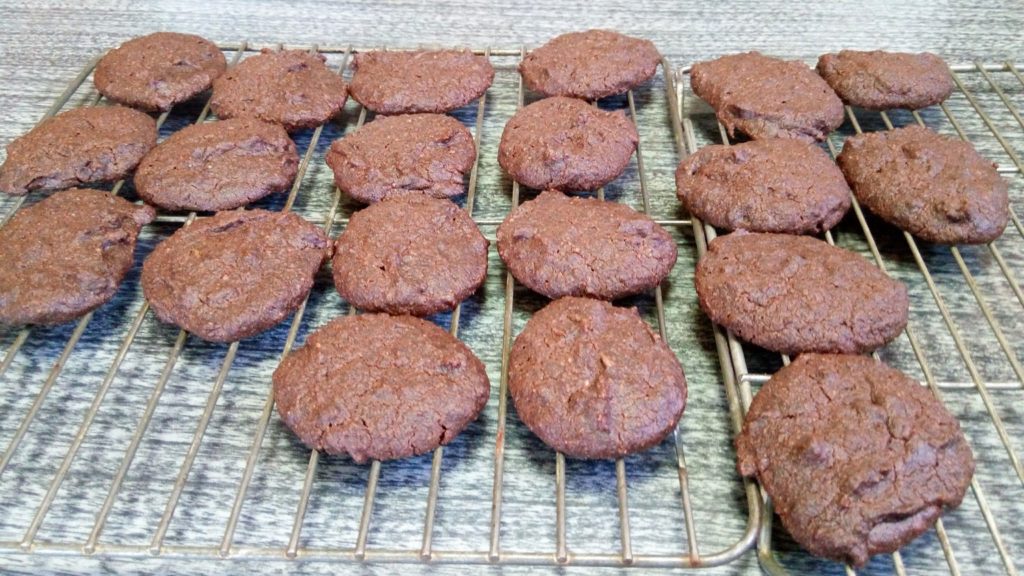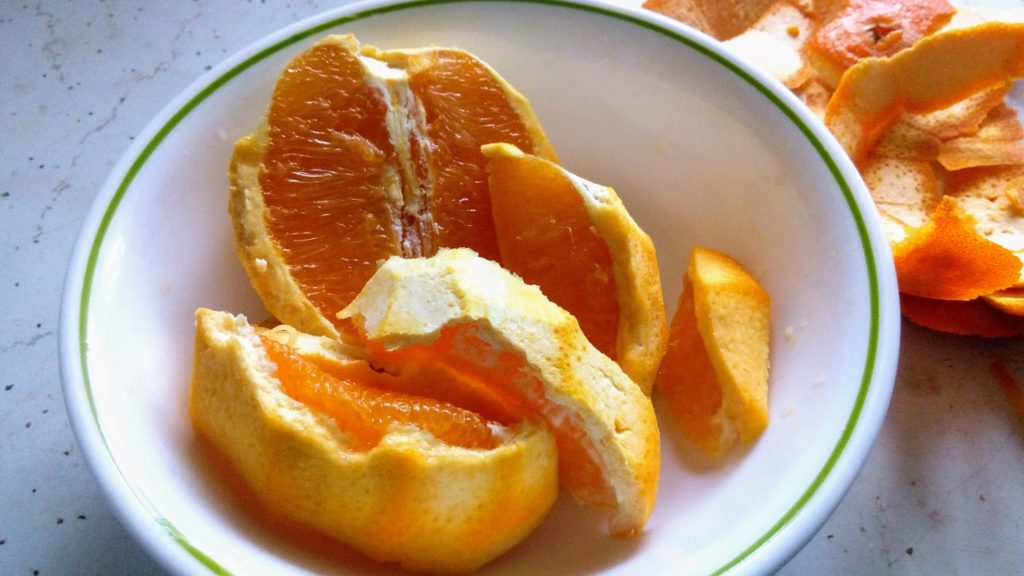How did citrus peel help my symptoms? In several ways it turns out, potentially. Antiviral actions, decongestant ability within the lungs, and by reducing the risk of blood clot formation within the lungs as the viral load increases and more tissue damage has occurred.
The antiviral capabilities were mentioned in previous posts – hesperidin and neohesperidin may act as antivirals in several ways, the vitamin C also, and quercetin can act as a zinc ionophore. Zinc ionophores are like chemical taxi-cabs – carrying zinc into infected cells preferentially where the zinc then disrupts the viral replication. (this post) No viral replication, no cell bursting to release them to infect other cells, and so on, in an exponentially increasing level of viral load and dead cells for the patient. The dead cell contents can also become a health risk when occurring in too great a quantity for white blood cells to collect it all for safe detoxification and removal at lymph nodes and by the kidneys.
Decongestant action is due to the bitterness of the hesperidin, neohesperidin, and probably other bitter tasting phytonutrients in citrus peel, and also quinine & chloroquines (also bitter tasting). (19) Think of taste or other sensory receptors that can do a variety of different things depending on where they are located and what they are connected to. Receptors are like tiny machines, activate the keyhole/puzzle piece opening with the matching chemical agonist, or inhibit with the matching chemical antagonist, and then the machine will do something if activated, or not do something or stop doing something if inhibited.
The chloroquines and quinines were found to help relax the airway in people with asthma, and increase movement of mucus out of the lungs. Activation of the bitter taste receptors on immune cells led to reduced production of inflammatory chemokines and cytokines. (19)
Taste receptors on the tongue would be connected to nerve cells that tell the brain a bitter taste or other flavor type was sensed and that information would be used to eat more if hungry for the taste or to stop eating if satisfied. Taste receptors for sweet carbohydrates are much less sensitive, more of the sweet taste is needed to activate them, than bitter taste receptors, by a magnitude of thousands – one or a few molecules of a bitter substance might activate the taste bud in the mouth, while thousands of sweet molecules might be needed to activate the sweet taste receptor. Sour is somewhere in between in the amount of sour molecules needed to activate sour taste receptors.
In other areas of the body sensory receptors may be attached to other chemical pathways instead of to nerves that go to the brain. Within the lungs there are many bitter taste receptors which when activated signal the mucus lining of the lung cells to make thinner mucus and to increase the motion of the cilia. Cilia are hair like or tail like projections lining the cell walls that can all work together in a wave like motion to move mucus and any dust or virus or other infectious microbes up and out of the lungs. (2)
“Stimulation of these receptors by known bitter compounds activates calcium-dependent nitric oxide (NO) production that increases phosphorylation of ciliary proteins through protein kinase G (PKG). This increases ciliary beat frequency to facilitate the movement mucus out of the airway by increasing mucociliary transport rates. The generated NO also diffuses into the airway surface liquid & acts as an antibacterial defense mechanism. NO damages bacterial cell walls & DNA & may also damage fungal pathogens & inactivate viral proteins .” (Freund & Lee, 2)
Non-productive cough, a dry cough, feeling like something is in the lungs but you just can’t cough it out is part of the typical symptoms of COVID19/SARS-CoV2 infections for people who get sick rather than being asymptomatic carriers*. (*see footnote) To be able to have thin mucus that is protective, able to be traveled through easily by our mobile line of defense – the white blood cells, we need to have adequate water, and electrolytes (ions) within the cells: magnesium and potassium, and outside of the cells: sodium and calcium. Providing magnesium as a supplement (300 mg/day) helped thin mucus for patients with the genetic condition Cystic Firbrosis which causes chronic excess lung congestion. (16)
“Mucus is more than 95% water, making water and ions just as important for controlling mucus properties .” (1)
If a person also is having nausea and vomiting and/or diarrhea, at the same time or in progressive stages, then dehydration and electrolyte deficiencies may become a significant problem, even life-threatening if severe. See this post (ACE2…) for digestive tips, and this one for a way to bypass malabsorption of magnesium with a topical source that can be absorbed through hair follicles (which is how ancient people would have gotten plenty – fresh water sources uses to be rich in magnesium).
To activate the bitter taste receptors that help with forming healthy thin mucus and help activate the wave like motion of the cilia we would need to have some bitter chemicals that match the bitter taste receptors found in great quantity within lung tissue. Hesperidin is a tasteless chemical found in citrus peel, with a bitter tasting chemical side chain, (3), and neohesperidin, a similar flavonoid, likely is obviously bitter in taste. (26)
“Hesperidin, a flavonoid present in many citrus fruits, provides an example of a multi-domain compound. This molecule was found to contain eight of the substructures that form the nodes of the tree, and a selection of these are given in Figure 6. Of the eight node substructures contained within hesperidin, only one contains a significant proportion of known bitter molecules.” (3)
Anticoagulant action: The vitamin C and flavonoids in citrus peel can also help prevent blood clot formation which in more severely ill patients with COVID19 infections has been found to be part of the mortality risk. (4) Prevention is important – strengthen capillary walls to prevent microvascular damage that can lead to blood collecting and forming clots which then may block larger blood vessels and cause stroke like damage to larger areas of tissue.
More detail about this problem is available in a document with a revised Marik Protocol for treatment of ARDS with Vitamin C Infusion (and contains thiamine, vitamin B1 which may also be needed in greater quantity during a severe infection response, see this document 14, and 15). The revision recommendations are based on COVID19 treatment in China and elsewhere – the lung problems are not typical of ARDS and patients likely need more oxygen than pressure from the ventilator support or worse lung damage may result. (evms.edu/EVMS_Critical_Care_COVID-19_Protocol.pdf) (8)
Important Recommendation for Earlier Treatment for patients suspected of having a COVID19 infection – for homecare/outpatient prescriptions:
The evms.edu pdf includes a recommendation for nutrients to be used as a prevention before infection, and at home for early treatment (see the pdf for that list). Here is their recommendation for prevention dosing:
- Vitamin C 500 mg BID and Quercetin 250-500 mg BID
- Zinc 75-100 mg/day (acetate, gluconate or picolinate). Zinc lozenges are preferred. After 1-2 months, reduce the dose to 30-50 mg/day.
- Melatonin (slow release): Begin with 0.3mg and increase as tolerated to 1-2 mg at night
- Vitamin D3 1000-4000 u/day (optimal dose unknown). Likely that those with baseline low 25- OH vitamin D levels and those > living at 40o latitude will benefit the most.
- (evms.edu/EVMS_Critical_Care_COVID-19_Protocol.pdf) (8)
- Food sources of Quercetin include dock, sorrel, cilantro/coriander leaves, radicchio, kale, watercress, asparagus, onions, and okra: (graphic, via @HiperacusiaCAT), in addition to being found in citrus peel. (23)
- Quercetin and EGCG are both are zinc ionophores that can carry zinc into infected cells preferentially where the zinc disrupts viral replication, and they may also have direct antiviral effects by inhibiting proteins that are important to the virus. The two phytonutrients may be even more effective at inhibiting the SARS-CoV2/COVID19 proteins than hydroxychloroquine and remsdivar medications based on computer modeling of the molecular shapes of the viral proteins, medications, and phytonutrients. (24)
Early treatment is critical due to the SARS-CoV-2 virus causing loss of iron from hemoglobin within red blood cells. In later stages of viral replication the lack of functioning hemoglobin alone causes lung damage due to the lack of oxygen. (20) Simply providing extra oxygen can’t help if there is too little functional hemoglobin. Providing blood transfusions with healthy red blood cells might be helpful – preventing the virus from replicating to that point would be better. *This theory was based on computer modeling and has not been verified. (25) The symptom of red blood cell’s having hemoglobin that is unable to transport oxygen is present in symptomatic Covid-19 illness, the theory about why iron is shifted out of hemoglobin was flawed.
Anemia of inflammation (post) could be the reason: the cytokine IL-6 causes an increase in hepcidin, which causes an increased movement of iron out of molecules of hemoglobin in red blood cells, or available for the growing red blood cells still within bone marrow, and into intracellular storage where it can overload the ability to keep it from oxidizing other chemicals and can lead to cell death. Pathogens also need iron so the strategy is a defense mechanism of the body that can become dangerous if the response becomes excessive. See the post Anemia of Chronic Inflammation, IL-6, Hepcidin, Iron, and Vitamin C, for more information.
A different group is recommending to the FDA to fast track approval for preventive, early treatment with zinc and an anti-malarial and an antibiotic that are fairly available and have a long history of use, so risks and dosing have been studied. “It’s important to note that HCQ, zinc, and azithromycin are very well understood drugs with clear safety profiles; they are widely available, generic, inexpensive, and can be scaled rapidly, including to the developing world, which would be expedited by US leadership in recommendations.” More is included in the second half of this post about the zinc and anti-malarial medication and other food/phytonutrient zinc ionophores which include quercetin. See this document for the recommendation to the FDA: (Immediate Treatment for Early Stage SARS-CoV-2 Infections). via (13)
Safety considerations of nutrient/phytonutrient Zinc Ionophore: Quercetin in very large doses may affect kidney health negatively (I can’t find a dose for that) however in an animal based study quercetin was protective of kidney health at a dose that would be about 360-720 milligrams per day for an adult weighing about 160 pounds (5-10 mg/Kg was provided to the experimental animals). (6) The amount of quercetin used as a zinc ionophore by a Canadian team may be 500 mg taken three times per day during or prior to suspected viral infection – but I can’t find the specific dosing. Zinc can be taken in larger amounts (~15-30 mg) for a few weeks but can collect in the body to excessive levels over time. Symptoms of chronic excess might include a decrease in immune function and copper deficiency may occur as the two trace minerals can affect each other (an excess of copper can cause a zinc deficiency). (Symptoms of excess Zinc, 7)
Bonus – Circadian cycles affect immune function – because bonuses are nice – another way phytonutrients, including hesperidin (9), may be helping immune function is by tipping the body towards the anti-inflammatory night-time chemistry and away from the daytime, stress response, inflammatory pathways.
And the bigger picture take-home-point from that is sleep is important for immune function and the sleep needs to have a complete blackout level of lighting for the body to be able to switch over to the anti-inflammatory action of an ancient dark night. We make more melatonin if we get some full spectrum daylight during daytime/wake hours and have complete darkness at nighttime – so a sleep eyemask or folded piece of soft clothing like a Tshirt draped over the eyes may help health. During my untested CoV-19 like illness I did have light sensitivity headaches and found sleeping or resting with a cloth over my eyes to be helpful.
Melatonin is a hormone that helps reduce inflammatory pathways that result in increased cytokines, and inflammasomes such as NLRP3 (10) which has been associated with worse prognosis for patients with COVID19. the role of NLRP3 activity in SARS-CoV (2003 strain) has been a subject of research. (12)
An animal study on oxidative damage from a type of cancer treatment: “Oral treatment with melatonin gel had a protective effect in the small intestine, which was associated with mitochondrial protection and, consequently, with a reduced inflammatory response, blunting the NF-κB/NLRP3 inflammasome signaling activation.” (10)
Phytonutrients that might inhibit NLRP3 and/or increase p53 activity.
Other phytonutrients including quercetin which is found in citrus peel, also can help inhibit production or activity of the inflammatory NLRP3 inflammasome. Sulfarophane (broccoli, etc), resveratrol (grape skins, etc), EGCG (green tea, pomegranate peel), curcumin (turmeric/curry powder), gensenoside (ginseng), emodin (aloe vera gel), mangiferin (mango) and genipin (from a fruit used as a Traditional Chinese Medicinal) are also phytonutrients that may reduce activity or production of NLRP3 inflammasomes. (17)
Increasing activity of a protein called p53 seems to help inhibit the production or activity of the NLRP3 inflammasome. Phytonutrients and nutrients that may promote p53 activity also include zinc, artemisinin (wormwood herb), goldenseal (berberine, also found in a few other herbs), Black seed oil (Nigella sativa), ginger (6-gingerol), feverfew, chamomile, and cordyceps mushrooms. (18) Replication of human coronaviruses and the SARS-CoV-1,(2003 strain) virus has been found to be inhibited by p53 and have also been found to cause the production of an additional protein that leads to breakdown of the p53 protein which may help explain the dysfunction of immune function in more severe infections. (21, 22)
Inactivating the NLRP3 inflammasome seems to have anti-inflammatory benefits (17) that may help prevent age related changes. It is an area of research being pursued for pharmaceutical development. (11) Sleep masks/pitch blackness during sleep, with the alarm clock and light leaking in the window covered, could help your body inactivate the NLRP3 inflammasome on a nightly basis with no ongoing copay. Options exist and are worth trying in an order of least toxicity risk to greater toxicity risk.
*Asymptomatic carriers: In some people the virus replicates somewhat but not to the point of much cell damage – not growing exponentially to the point of the patient’s life being threatened. Instead the virus seems to just become dormant within some cells and the person isn’t even aware they are sick – a symbiotic host/parasite relationship assures the parasite goes on living – in a living host – which is not abnormal, we typically have virus in us that can even provide some health benefits possibly – symbiotic means benefits both the host and the parasite, but not enough is known about this area of study – called our virome, (5), instead of microbiome.
Disclaimer: This information is provided for educational purposes within the guidelines of Fair Use. It is not intended to provide individual guidance. Please seek a health care provider for individualized health care guidance.
Reference List
- Hansson GC. Mucus and mucins in diseases of the intestinal and respiratory tracts. J Intern Med. 2019;285(5):479–490. doi:10.1111/joim.12910 https://www.ncbi.nlm.nih.gov/pmc/articles/PMC6497544/
- Jenna R. Freund, Robert J.Lee, Taste receptors in the upper airway. World Journal of Otorhinolaryngology – Head and Neck Surgery, 4;1, March 2018, pp 67-76 https://www.sciencedirect.com/science/article/pii/S2095881118300167
- Sarah Rodgers, Johanneke Busch, Hans Peters, Elly Christ-Hazelhof, Building a Tree of Knowledge: Analysis of Bitter Molecules. https://academic.oup.com/chemse/article/30/7/547/360693
- Here’s the Damage Coronavirus (COVID-19) Can Do to Your Lungs. March 20, 2020, health.clevelandclinic.org, https://health.clevelandclinic.org/heres-the-damage-coronavirus-covid-19-can-do-to-your-lungs/
- Virgin HW. The virome in mammalian physiology and disease. Cell. 2014;157(1):142–150. doi:10.1016/j.cell.2014.02.032 https://www.ncbi.nlm.nih.gov/pmc/articles/PMC3977141/
- Yang H, Song Y, Liang YN, Li R. Quercetin Treatment Improves Renal Function and Protects the Kidney in a Rat Model of Adenine-Induced Chronic Kidney Disease. Med Sci Monit. 2018;24:4760–4766. Published 2018 Jul 10. doi:10.12659/MSM.909259 https://www.ncbi.nlm.nih.gov/pmc/articles/PMC6069490/
- Too much Zinc: Symptoms, Causes, and Treatments, MedicalNewsToday.com, https://www.medicalnewstoday.com/articles/326760#symptoms
- EVMS Critical Care COVID-19 Management Protocol, *Marik protocol revised, evms.edu https://www.evms.edu/media/evms_public/departments/internal_medicine/EVMS_Critical_Care_COVID-19_Protocol.pdf
- A. Manjula, R. Subashini, R. Punitha & P. Subramanian (2017) Modulating effects of hesperidin on circadian pattern indices of rotenone induced redox homeostasis in clock mutant (cryb) of Drosophila melanogaster, Biological Rhythm Research, 48:6, 897-906, DOI: 10.1080/09291016.2017.1319641 https://www.tandfonline.com/doi/abs/10.1080/09291016.2017.1319641?journalCode=nbrr20
- Beatriz Fernández-Gil, Ahmed EA Moneim, Francisco Ortiz, et al, Melatonin protects rats from radiotherapy-induced small intestine toxicity. PLOS One, April 12, 2017 https://doi.org/10.1371/journal.pone.0174474 https://dx.plos.org/10.1371/journal.pone.0174474
- Hannah Balfour, NLRP3 inflammasome ‘off switch’ reverses effects of chronic inflammation. Feb 6, 2020, drugtargetreview.com, https://www.drugtargetreview.com/news/55776/nlrp3-inflammasome-off-switch-reverses-effects-of-chronic-inflammation/
- I-Yin Chen, Miyu Moriyama, Ming-Fu Chang and Takeshi Ichinohe, Severe Acute Respiratory Syndrome Coronavirus Viroporin 3a Activates the NLRP3 Inflammasome. https://www.frontiersin.org/articles/10.3389/fmicb.2019.00050/full
- Immediate Treatment for Early Stage SARS-CoV-2 Infections. via Avery J. Knapp, Jr. MD (https://twitter.com/aknappjr/status/1247497984431943680?s=20) https://docs.google.com/document/d/1ka76CL50hR_a0b5oIhEAVY4gfyqkJcBxXBcP0r2nrz0/edit?fbclid=IwAR0ss1p0lsPhLkSFhO6_8vJK19BUispAREVcn0oi09iajG-Pq4HDCMFTQdg
- James Ludell, Operation CAI-Reducing Peak Load on Hospitals from COVD-19, April 5, 2020, last updat April 10, 2020, (father of a child with a rare condition for which high dose thiamine helps – making him a very well-informed patient advocate sharing information that typically would not be used/studied for standard patient care – but can be helpful for critically ill and/or malnourished patients, see 15), https://docs.google.com/document/d/1vnYosVsgChnGVecOXp96T5i2UibTsnHVaDUVF6Us2uM/edit?usp=sharing
- Manzanares W, Hardy G. Thiamine supplementation in the critically ill. Curr Opin Clin Nutr Metab Care. 2011;14(6):610–617. doi:10.1097/MCO.0b013e32834b8911 https://pubmed.ncbi.nlm.nih.gov/21912244/
- Magnesium Clears up Mucus and Improves Breathing in Cystic Fibrosis Patients. Feb 10, 2014, Natural Health Research Institute, naturalhealthresearch.org, https://www.naturalhealthresearch.org/magnesium-mucus-cystic-fibrosis/
- József Tőzsér and Szilvia Benkő, Natural Compounds as Regulators of NLRP3 Inflammasome-Mediated IL-1β Production. Mediators of Inflammation, 2016, Article ID 5460302, 16 pages, https://doi.org/10.1155/2016/5460302 https://www.hindawi.com/journals/mi/2016/5460302/
- Pack GL, Natural Promotion of p53 Protein Activity. Dr. Pack’s Summary #763, Rainbow Grocery, San Francisco, CA, USA. https://www.rainbow.coop/library/natural-promotion-of-p53-protein-activity/
- (Nayak, Shah, Deshpande, 2019) Nayak AP, Shah SD, Michael JV, Deshpande DA. Bitter Taste Receptors for Asthma Therapeutics. Front Physiol. 2019;10:884. Published 2019 Jul 16. doi:10.3389/fphys.2019.00884 https://www.ncbi.nlm.nih.gov/pmc/articles/PMC6647873/
- *This paper has been found to have flaws in the interpretation. (25) Wenzhong Liu, Hualan Li, COVID-19: Attacks the 1Beta Chain of Hemoglobin and Captures the Porphyrin to Inhibit Human Heme Metabolism. covid19-2020004-9-EN.pdf ChemRxiv, https://chemrxiv.org/articles/COVID-19_Disease_ORF8_and_Surface_Glycoprotein_Inhibit_Heme_Metabolism_by_Binding_to_Porphyrin/11938173
- LMU Press Release, contact person Dr. Albrecht von Brunn, How a Tumor Suppressor Indirectly Inhibits Coronaviruses. Aug 12, 2016, DZIF German Center for Infection Research, https://www.dzif.de/en/how-tumor-suppressor-indirectly-inhibits-coronaviruses
- Yue Ma-Lauer, Javier Carbajo-Lozoya, Marco Y. Hein, et al., p53 down-regulates SARS coronavirus replication and is targeted by the SARS-unique domain and PLpro via E3 ubiquitin ligase RCHY1. Proceedings of the National Academy of Sciences Aug 2016, 201603435; DOI: 10.1073/pnas.1603435113 https://www.pnas.org/content/early/2016/08/11/1603435113.abstract
- Shafiya Rafiqa, Rajkumari Kaula, S.A.Sofi, et al., Citrus Peel as a Source of Functional Ingredient: A Review, J Saudi Society of Ag Sci, 17;4, Oct 2018, pp 351-358, https://www.sciencedirect.com/science/article/pii/S1658077X16300960
- Michael Lustgarten, Coronavirus – Can Diet Help?, April 11, 2020, michaellustgarten.com, https://michaellustgarten.com/2020/04/11/sars-cov-2-can-diet-help-in-the-fight/
- Randy J Read, Flawed methods in“COVID-19: Attacks the 1-Beta Chain of Hemoglobin and Captures the Porphyrin to Inhibit Human Heme Metabolism” ChemRxiv.org, https://chemrxiv.org/articles/Flawed_methods_in_COVID-19_Attacks_the_1-Beta_Chain_of_Hemoglobin_and_Captures_the_Porphyrin_to_Inhibit_Human_Heme_Metabolism_/12120912
- Adam Drewnowski, Carmen Gomez-Carneros, Bitter taste, phytonutrients, and the consumer: a review, Amer J of Clinical Nutrition, 72;6, December 2000, Pages 1424–1435, https://doi.org/10.1093/ajcn/72.6.1424 https://academic.oup.com/ajcn/article/72/6/1424/4729430 Addition – “neohesperidoside, and neohesperidin are very bitter, whereas hesperidin is tasteless “

